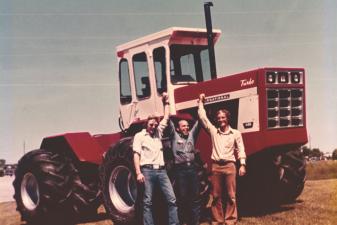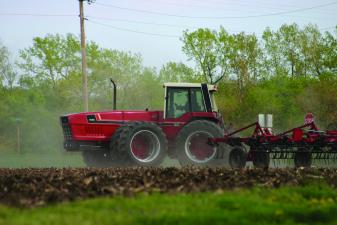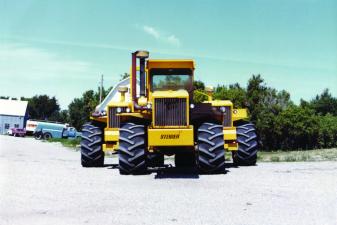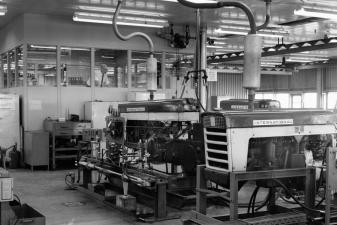How the 2+2 Tractor Became Known as the Snoopy (And its Other, Crueler Name)

During the research for Snoopy and the Spy (order here) author and Octane Press founder Lee Klancher spoke at length with Bud Youle, an executive who was one of International Harvester's secret weapons in their war with John Deere for control of the American tractor market. His stories were fantastic, so we're presenting some of these lost stories here. In this interview transcript Bud Youle (Yes, the same Bud Youle who snuck into a John Deere Convention as a spy for IH) explains what International Harvester's 2+2 was supposed to do, and how it came to be called the Snoopy, as well another, less flattering name.
---
BUD YOULE: [International Harvester] called and asked that I come into Chicago one day, so I came in. They laid out what was taking place in the tractor business. At that particular time . . . they had already introduced the 86 Series tractors. The 86 Series tractors were very good, reliable tractors, but what was happening in the marketplace was that John Deere was on the move, they had very, very comfortable cabs to ride in, they had steering that was different than ours.
Consequently, we had to get going quick because market share at that era was the name of the game. Farming practices were starting to change. In other words, what I'm getting at is grandpa and grandma farmed in 40-inch rows, and two mules, and down the field you went. Now, they were coming with 30-inch rows. Some people would farm up 15-inch rows. The tire people were constantly between Good Year, Firestone, and BF Goodrich. The tires that later came with tractors during that era, we were sitting here to match these tires to get down to not only 40-inch rows, 30-inch rows, because the thing that was happening, the cost, these products started going up, up, up, and up, because we put more and more engineering expense in them.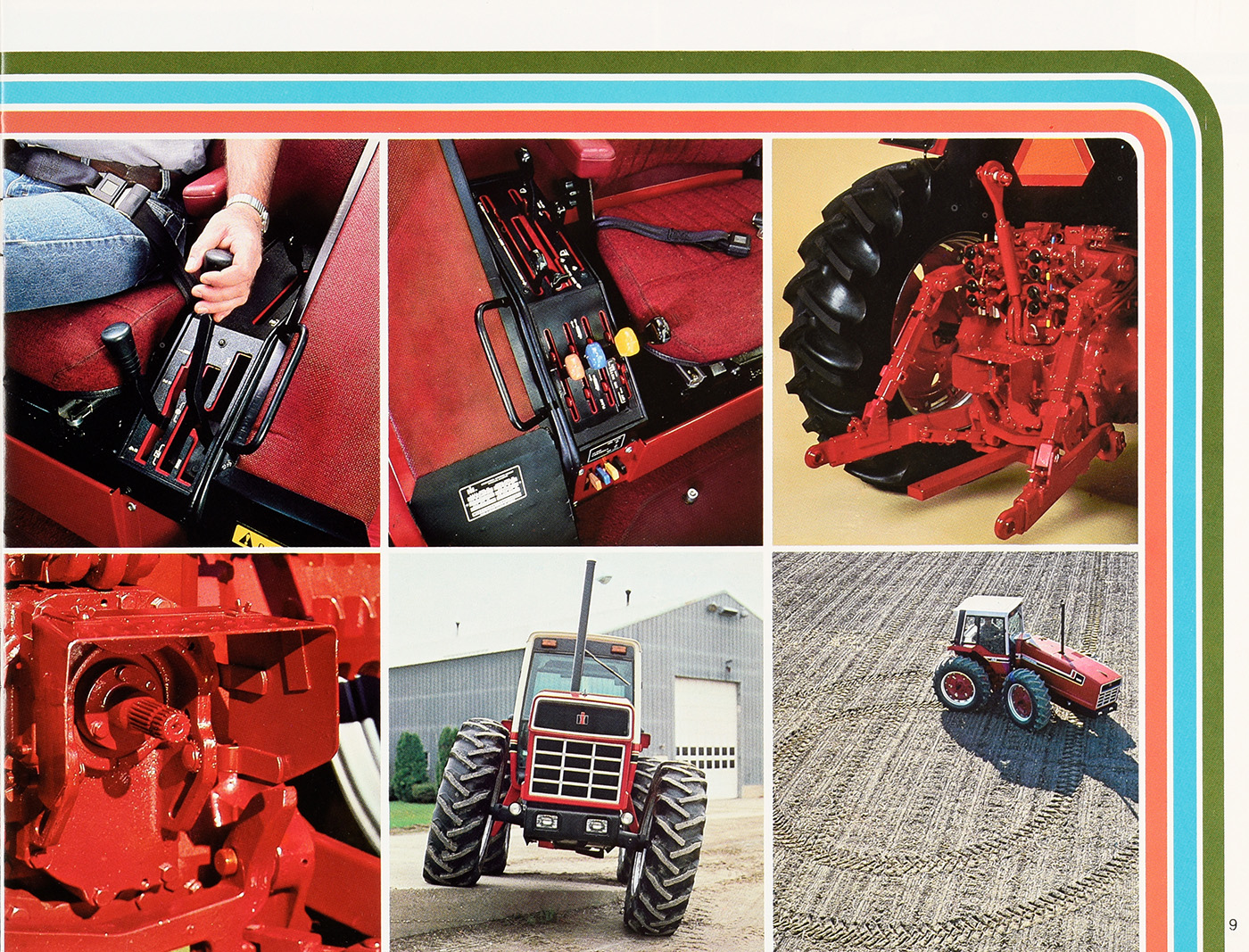
Consequently, with that in mind, when I got into Chicago . . . we had the 4366 and 4566. Now, to make a long story short, the 43, the 45 were powerhouse tractors. They did a good job. Some people couldn't criticize them. The biggest disadvantage to both tractors that we had, we had to overcome it, was I could not put a power take-off in those tractors. Now, you say, "Why do you want a power take-off in a big, four-wheel drive tractor pull?" One of the changes that was occurring in that time was the ability to run sprayers, to pull sprayers. We couldn't pull sprayers with our four-wheel drive tractors.
Now, that created a horrendous mess, because then the next thing you think is, "Well, run it off high hydraulics." We didn't have enough hydraulics. Believe me, we tried every way we could to run a PTO shaft off that dropbox, the backend of the tractor. We literally, literally could not get the PTO in there to operate the tractor, because what was happening in the south, the gear power shift tractor was the governing factor in the south because of the power shift. You could put anybody on that tractor and tell them to go into sixth gear, and shift to fifth, and shift to fourth, and stay in those gears, and it could work day-in and day-out, no problems.
By that time, rice had started gaining popularity, and cotton. Cotton was still in 40-inch rows. Rice was a very territory oriented product. They had dirt buggies. It was pulling dirt buggies leveling fields. We ran into a nightmare of problems with the four-wheel drive tractor, which later we cured, but it was too late in the day to get it cured, if you know what I'm trying to say. What we did then was we had to come up in horsepower. Now, the V-8100 engine was a Melrose Park engine. It was in the 175. It was in the TD-20 crawler. Then that engine was a very good engine there. No problem at all, but we had to turn it up some more. Get more power out of it. That accrued a couple other problems.
We were always wondering, “How much does it cost to get it fixed?” You fix one thing, you got to fix something else. In other words, people's natural reaction is, "Well, just change the pump." You don't just change a diesel pump unless you get the injectors set. If you don't have enough radiator capacity, you're going to create another problem. We finally came to the conclusion, "Well, let's come with a higher horsepower factor."
Now, the other thing that was happening at that time: Steiger and Versatile, Versatile was the Canadian company, Steiger was the independent company in North Dakota. They were an independent company. Steiger and Versatile both took on not only the Cummins engine, but they also put Caterpillar engines in. Now, then we got into another great big fight within the company . . .
We ran into trouble, because people said, "We don't want any Cat engines in there," because of the construction business, because of the heavy industrial business. Then you get into Cummins doing the same thing.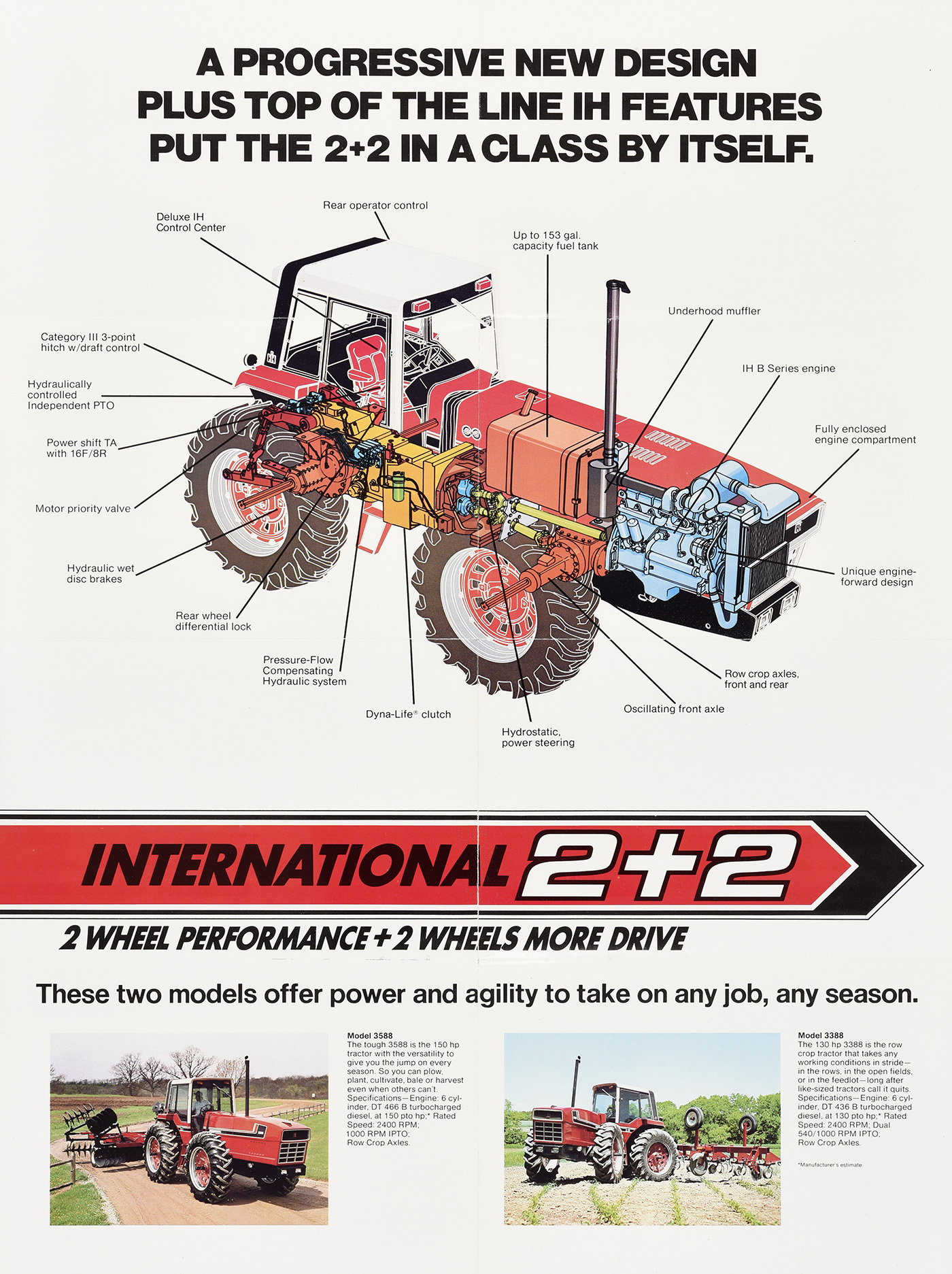
Cummins then got into this ‘constant power’. Nobody could spell constant power. Constant power basically was the idea of shifting up and throttling back, and using less fuel, and let the diesel pump deliver the horsepower to the tire wheels. Consequently, they made a fortune off of this system. Now, we went to the 86 Series tractors and the 466, we rated that engine, as I recall, at 2400 [rpm]. The peak power . . . was in the neighborhood of 2200 [rpm]. At that point, I was creating constant power. I created a lot of power. I created more power there than I did with the PTO when I went to Nebraska.
Personally, if I went to your farm, and I was going to demonstrate, I would set the load where I wanted you to run that tachometer somewhere around 2200, because you're dealing with constant power. We had put that into the 466, as well as the 436 at that time. Now, the other thing that was happening was the 84 Series tractor from Doncaster, England. Now, Doncaster was a plant up in the north, north of London, that made the 384, the tractors, from 25 horsepower up to 80 horsepower. Now, in the US at that time, the biggest tractor market was the 32, 69, and 85 horsepower market (and) . . . the Ford tractors, which started in the early interim way, way back. Those two dominated that market.
Now, we were in the market. We were holding in the neighborhood, as I recall, 22, 23 percent market share. Now, then the people from John Deere decided they're going to get into the small tractor business. When they got into it, it became a true fistfight between the four of us. Consequently, that took a lot of time, because we were continually trying to get more horsepower. Doncaster wouldn't give me the horsepower. We were wanting more hydraulics. Doncaster wouldn't give me the hydraulics, because I was at the outer limit of the power train, and they didn't have the money, because now I'm dealing in international currency. It's the same thing that's getting ready to happen in the world right now between the US and Europe. The euro versus the dollar. We were into that all the time. We had a back office for a few things.
Now, when I got into Chicago . . . the decision was made that we were going to take on John Deere one-on-one. The combine people, they did not have the extra cash. You know it's probably in your combine book, but Deere was pushing the 7700 series, the big combine. Then they got the 9500 series. They pushed that concave approach until they were like we were with the 86. We were out of breath. I couldn't push anymore. We ran out of air.
We fought them. We held there at market share level, but we had a sit down. We were figuring out that somewhere along the line we had to come up with something innovative, something that nobody has even conceived. That's a terrible term to use, but we had to also do one other thing. We couldn't spend any money. That's bad, when you couldn't spend any money. Consequently, we were sitting and planning, and all of a sudden somebody said, "What if we took an 86 rear-end and put on an articulation point with a 466 out in front of it?" Bingo. I can fit down 30-inch rows, 40-inch rows, and I can create a row crop tractor. I could overcome the traction problem we were starting to have, because as horsepower went up, these tires were spinning. We were ordering weights on them. We were packing the ground. All of a sudden, it hit us like a light bulb. The engineering people were one step ahead of us setting the groove. They had already built a prototype model. They thought the same thing through.
Very few people in the Harvester company knew we were building this tractor [and] we'd take it out on field tests. We had our own truck, we had our own people . . . I've got to say it was a [very] well-kept secret. [Testing was critical] because we didn't know what we had. We were trying to prove to ourselves that this thing would work.
“When we started playing with [the 2+2], we knew . . . the limiting factor was the differential of the 86 series tractors . . . because we were going to fall in this category from 130 to 170 horsepower tractors, in that neighborhood, without endangering the differential on the power train. Now, when we started going upstairs, and asking for money, and showing people drawings, and pulling people out and showing them the tractor, the first word was, "My god, who thought up this ugly SB?" The nickname we hung on, basically, was the SB.[SB being military shorthand for what we all know more commonly as an S.O.B.]
Then the word Snoopy got in. Then the word anteater got in, but the point was we had to go to [the] Farmall Plant. We could not build this tractor on the line the way the line was configurated. Now, you say, "Well, it was an 86 rear-end." Yes, it was an 86 rear-end, but we had to get this long Snoopy nose down the line. We had to get it through a paint booth. Now, all of a sudden, the dollars started going up, but what we did was we said, "Okay, let's go to this. We got to have a tool that's center articulated and such." We started doing all this.
The people at Farmall Plant were going absolutely bonkers. I have to commend all the people at Farmall Plant, because what we had to do was we had to build Farmall Plant bigger. That was the last thing the Harvester company management wanted to hear was, "We're going to build the plant bigger." That was not in the cards, if you know what I'm trying to say. We built this long shed on the backside. That's where that tractor came down the line and we finished it out. I'm saying that, because in 1978, when we got the tractor ready to introduce and shipped it to Phoenix, Arizona, I still knew that nobody in the Deere company could conceive what we were doing. That was the only guy that I was really setting my sights on, because I knew that if I could make this tractor sell in the south, we could keep the Harvester company, keep the case fill coming. Even though I didn't have a power shift, I could keep it coming.
What we did was we built 36 tractors in that new semi-line plant. Now then, we ordered 36 box cars, or flat cars, and we built boxes over the top and covered these tractors. Let me tell you, the Union Pacific, the Southern Pacific, hauled those cars to Phoenix, Arizona. I want to tell you, you would be driving down the road, and people would call me, and they would say, "What went by going? Did you ship something west? There's 36 boxed flat cars going by here. They're all in boxes." "I don't know anything about it." We had them covered up. Now then, what we knew, the trick was about to get out of the bag, if you know what I mean.
---
Check out the second part of the Snoopy story, to find out what the world thought of the 2+2 when it was revealed. And if you want to learn more secret stories about your favorite red machines make sure you check out Snoopy and the Spy.


